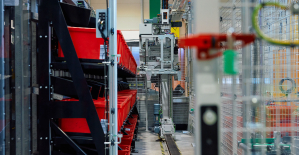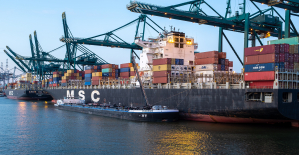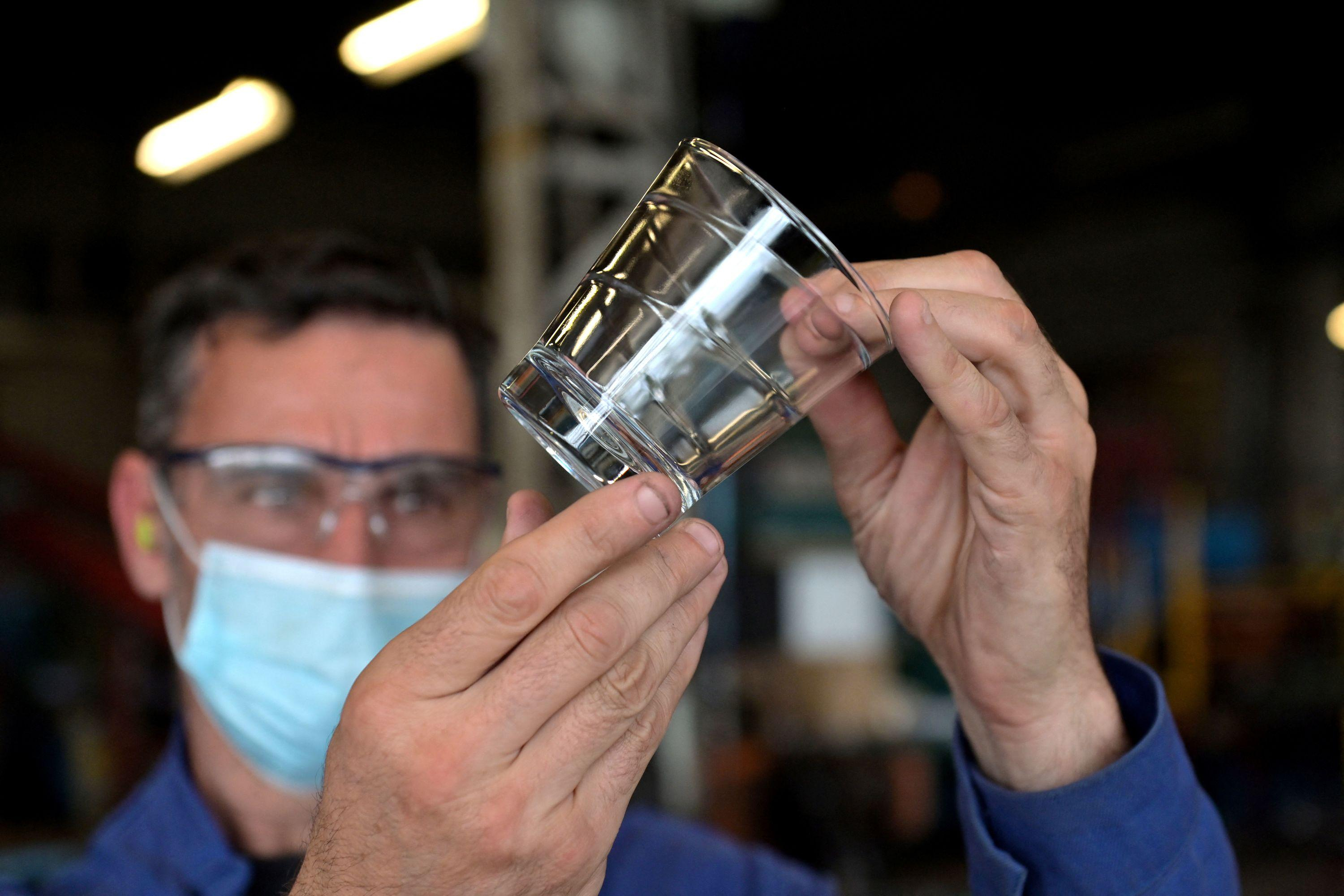Recently took the German authorities in Schleswig-Holstein is an important decision that gives the go-ahead for the construction of the Fehmarn belt link between Germany and Denmark. The link will change the playing field for our respective cities, regions and countries. Properly handled, it will have a decisive significance for both the increased growth that the work to achieve our countries ' environmental objectives.
Well completed in the year 2028, it is expected the 18-kilometre long road and rail tunnel lead to that the travel time between Malmö, Copenhagen and Hamburg is shortened, from the current five hours to under three. The Fehmarn belt link thus creating a new basis for cooperation between our countries and strengthens the cities in the global competition for new investments and start-ups.
the Tunnel is expected to accelerate the development further and to do that we end up in the center of a new northern european storregion with about 11.5 million inhabitants.
the Number of passengers between Scandinavia and Central europe is expected to increase by 110 percent by the year 2035, while rail freight almost doubled. This makes our countries now need to invest in capacity strengthening measures.
New opportunities are opening up for residents in our towns and cities to visit each other, to study or work across borders. New markets arise for the companies which leads to more jobs created. It benefits both in Denmark, Sweden, northern Germany.
Our cities are cooperating in the day tightly within the political partnership String to take advantage of the possibilities of the upcoming relationship, a cooperation that stretches from Hamburg and Schleswig-Holstein in the south, through the Copenhagen/Malmö and up to fylkena around Oslo.
the Whole of the so-called Scan-Med corridor that stretches between Italy in the south and the Finnish-Russian border in the north affected by an important bottleneck for transport along the route is eliminated.
Therefore, it is important that our countries are preparing to cope with developments in a wise way. It is about building on the experience of Öresundsintegrationen and work with to make it easier for people to live, study or work across national borders.
We see the Fehmarn belt tunnel as a necessary investment that we should be able to reach the ambitious national environmental targets and to secure future growth for our respective countries. New opportunities arise for moving of freight from road to rail and thereby create green transportspår with reduced congestion on the roads. More people will choose the train in front of the flight between our cities.
Germany is Sweden's largest export market. 2016, Sweden exported to a value of approximately sek 126 billion to Germany, while imports amounted to 227 billion. About half of the Swedish steel exports in the day by rail by the Oresund bridge, down to the continent. Through the Fehmarn belt tunnel has achieved a time savings of between two and three hours for transportation between Germany and Sweden. Both the forestry industry, the steel industry and other industries can benefit from this time savings.
For us it is clear, however, we need to put into action to tackle bottlenecks in the infrastructure that is already being felt to this day if we are going to take advantage of the relationship to the fullest. According to a report Ramboll took until last year, the number of rail passengers between Scandinavia and Central europe will increase by 110 percent by the year 2035, while rail freight almost doubled. This makes our countries now need to invest in capacity strengthening measures.
It's about:
• A Ring of the South connection, which secures direct train services between Roskilde and Copenhagen airport, and potentially further on to Malmö/Sweden , at the same time relieve the pressure on Copenhagen's Hovedbanegård.
• the rapid expansion of the southern main line in Sweden , which is already today acting bottleneck and risk getting it even more when freight and passenger traffic across the Fehmarn-belt bridge is expected to increase.
• Fast high-speed trains between Sweden's major cities with connections on to Copenhagen and further south, at a rapid rate of network expansion.
• Further analysis on a Öresundsmetro between Malmö and Copenhagen , linked to the Copenhagen metro system. The metro will both enlarge arbetsmarknadsregionen with about a million people, but above all it will relieve the Öresund bridge to secure future increases in passenger and freight transport.
• Implementation of the S4, a train line between Hamburg and Bad-Oldesole (Schleswig-Holstein) that relieves the Scan-Med corridor by separating regional traffic and long-distance transport.
We see that the Fehmarn belt-connection means a potential for greater growth and contribute to achieving our countries ' ambitious environmental targets. We see the value of thinking across national borders. Our cities through continued cooperation and by being linked closer to each other also drive this development for the benefit of our countries. We will make it together through the String-cooperation, and bilateral.

 Germany: abortions should be authorized up to 12 weeks, concludes a commission launched by Olaf Scholz
Germany: abortions should be authorized up to 12 weeks, concludes a commission launched by Olaf Scholz Knife attack in Australia: who are the two French heroes congratulated by Macron?
Knife attack in Australia: who are the two French heroes congratulated by Macron? Faced with an anxious Chinese student, Olaf Scholz assures that not everyone smokes cannabis in Germany
Faced with an anxious Chinese student, Olaf Scholz assures that not everyone smokes cannabis in Germany In the Solomon Islands, legislative elections crucial for security in the Pacific
In the Solomon Islands, legislative elections crucial for security in the Pacific Covid-19: everything you need to know about the new vaccination campaign which is starting
Covid-19: everything you need to know about the new vaccination campaign which is starting The best laptops of the moment boast artificial intelligence
The best laptops of the moment boast artificial intelligence Amazon invests 700 million in robotizing its warehouses in Europe
Amazon invests 700 million in robotizing its warehouses in Europe Inflation rises to 3.2% in March due to gasoline and electricity bills
Inflation rises to 3.2% in March due to gasoline and electricity bills Against drug trafficking, the mayor of Amsterdam advocates the regulation of cocaine
Against drug trafficking, the mayor of Amsterdam advocates the regulation of cocaine Hachette Livre removes Isabelle Saporta from management of Fayard
Hachette Livre removes Isabelle Saporta from management of Fayard Where is the MSC Aries, the ship boarded by Iran?
Where is the MSC Aries, the ship boarded by Iran? Denis Olivennes at Le Figaro: “CMI France discusses with Natacha Polony the future of Marianne”
Denis Olivennes at Le Figaro: “CMI France discusses with Natacha Polony the future of Marianne” 2024 Candidates Chess Tournament: Relive the Crucial Nepo-Gukesh Game
2024 Candidates Chess Tournament: Relive the Crucial Nepo-Gukesh Game Borgo, by Stéphane Demoustier: locked outside
Borgo, by Stéphane Demoustier: locked outside Release of hostages and immediate ceasefire: at the Venice Biennale, the Israeli pavilion resonates with Gaza
Release of hostages and immediate ceasefire: at the Venice Biennale, the Israeli pavilion resonates with Gaza Two Russian artists declared “terrorists and extremists” because of a play
Two Russian artists declared “terrorists and extremists” because of a play Skoda Kodiaq 2024: a 'beast' plug-in hybrid SUV
Skoda Kodiaq 2024: a 'beast' plug-in hybrid SUV Tesla launches a new Model Y with 600 km of autonomy at a "more accessible price"
Tesla launches a new Model Y with 600 km of autonomy at a "more accessible price" The 10 best-selling cars in March 2024 in Spain: sales fall due to Easter
The 10 best-selling cars in March 2024 in Spain: sales fall due to Easter A private jet company buys more than 100 flying cars
A private jet company buys more than 100 flying cars This is how housing prices have changed in Spain in the last decade
This is how housing prices have changed in Spain in the last decade The home mortgage firm drops 10% in January and interest soars to 3.46%
The home mortgage firm drops 10% in January and interest soars to 3.46% The jewel of the Rocío de Nagüeles urbanization: a dream villa in Marbella
The jewel of the Rocío de Nagüeles urbanization: a dream villa in Marbella Rental prices grow by 7.3% in February: where does it go up and where does it go down?
Rental prices grow by 7.3% in February: where does it go up and where does it go down? Europeans: the schedule of debates to follow between now and June 9
Europeans: the schedule of debates to follow between now and June 9 Europeans: “In France, there is a left and there is a right,” assures Bellamy
Europeans: “In France, there is a left and there is a right,” assures Bellamy During the night of the economy, the right points out the budgetary flaws of the macronie
During the night of the economy, the right points out the budgetary flaws of the macronie Europeans: Glucksmann denounces “Emmanuel Macron’s failure” in the face of Bardella’s success
Europeans: Glucksmann denounces “Emmanuel Macron’s failure” in the face of Bardella’s success These French cities that will boycott the World Cup in Qatar
These French cities that will boycott the World Cup in Qatar Bundesliga: Naby Keita suspended by Werder Bremen until the end of the season
Bundesliga: Naby Keita suspended by Werder Bremen until the end of the season Euro 2024: the Blues reveal their opponents for friendlies in June
Euro 2024: the Blues reveal their opponents for friendlies in June Cycling: De Marchi wins the 2nd stage of the Tour of the Alps
Cycling: De Marchi wins the 2nd stage of the Tour of the Alps Paris Olympics 2024: Joris Daudet (BMX) candidate to be French flag bearer
Paris Olympics 2024: Joris Daudet (BMX) candidate to be French flag bearer


















